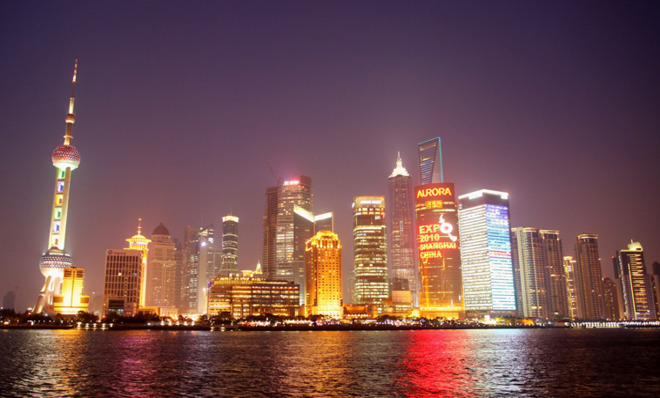Can we use skyscrapers to predict financial crashes?
A look at the historical record shows a strong correlation between the construction of big buildings and market meltdowns

When will the next financial crash happen?
If you know the answer to that question, you could get very rich by selling assets and shorting markets when it happens. And if you correctly make a public prediction of a crash, investors will pay princely sums for your advice afterward.
The problem is that predicting the financial future is really hard. In a system as massively complex as the global economy, causality can be hard to discern, and trends in the past don't necessarily hold in the present.
The Week
Escape your echo chamber. Get the facts behind the news, plus analysis from multiple perspectives.

Sign up for The Week's Free Newsletters
From our morning news briefing to a weekly Good News Newsletter, get the best of The Week delivered directly to your inbox.
From our morning news briefing to a weekly Good News Newsletter, get the best of The Week delivered directly to your inbox.
One pattern that has held up relatively well, though, is the construction of the world's tallest skyscrapers. For the last 140 years, the emergence of world-beating skyscrapers has tended to coincide with financial crises. The theory is that the soaring ambition of an overheated economic boom expresses its peak through the construction of the world's tallest skyscraper, meaning the economy is due a correction.
The historical record is quite convincing. Among nearly a dozen examples, we have the beginning of the so-called Long Depression in 1873, which coincided with the completion of the Equitable Life Building, the world's first skyscraper at a height of 142 feet.
The panic of 1907 — which led to the creation of the Federal Reserve in 1913 — was quickly followed by the completion of New York's Singer building (612 feet) in 1908 and the Metropolitan Life building (700 feet) in 1909. The Great Depression was also marked by a flurry of skyscrapers: the 927-foot 40 Wall Street in 1929, the 1,046-foot Chrysler building in 1930, and the 1,250-foot Empire State building in 1931.
The 1972 and 1973 completions of the two World Trade Center towers — 1,368 and 1,362 feet, respectively — and the ribbon-cutting of the 1,451-foot Sears Tower in 1974 overlapped with the 1973 oil crisis, the 1973-74 stock market crash, and the 1973-75 recession.
A free daily email with the biggest news stories of the day – and the best features from TheWeek.com
The 1997-98 Asian financial crisis coincided with the opening of Kuala Lumpur's 1,483-foot Petronas towers in 1997, while the bursting of the dotcom bubble in 2000 was accompanied by the construction of the 1,671-foot Taipei 101 in Taiwan between 1999 and 2004.
And, finally, the Great Recession of 2007-10 was heralded by the building of the 2,717-foot Burj Khalifa in Dubai, which was finished in 2010.
With China gripped by what Bloomberg News calls "skyscraper mania" — China is home to 53 percent of the world's current skyscraper construction projects, including Sky City, a 2,749-foot tall building in Changsha slated to begin construction as early as July — are we on the verge of a new financial crisis?
Don't be so sure. While world-leading skyscrapers are undoubtedly a symptom of soaring economic optimism, the timing is still really hard to get right. Taipei 101 was completed in 2004, four years after the dotcom bubble burst, while the Burj Khalifa was completed three years after the 2007-10 financial crisis started. Yes, they are both in the range, but several years is an eon for investors. If you had been trying to time the stock market by skyscraper construction, you would have made an extremely costly error. It is more of a subtle risk indicator than a precision tool.
In any case, it's unclear when China will get around to building Sky City. Last year, the developers claimed they could build it in 90 days, starting in either June or July of 2014, but Sky City's construction site is currently being used to grow corn and melons.
There is another project underway to build the world's tallest skyscraper, Saudi Arabia's Kingdom Tower, which is scheduled for completion in 2019. Could there be a financial crash between now and then? Yes, of course. We do live in an age of soaring economic ambitions and booming markets — particularly in China and the Persian Gulf — and that's bound to lead to a bust of some sort eventually.
But timing the slump is the real problem — and the real art. Skyscrapers are at best a very, very blunt instrument for that purpose.
John Aziz is the economics and business correspondent at TheWeek.com. He is also an associate editor at Pieria.co.uk. Previously his work has appeared on Business Insider, Zero Hedge, and Noahpinion.


